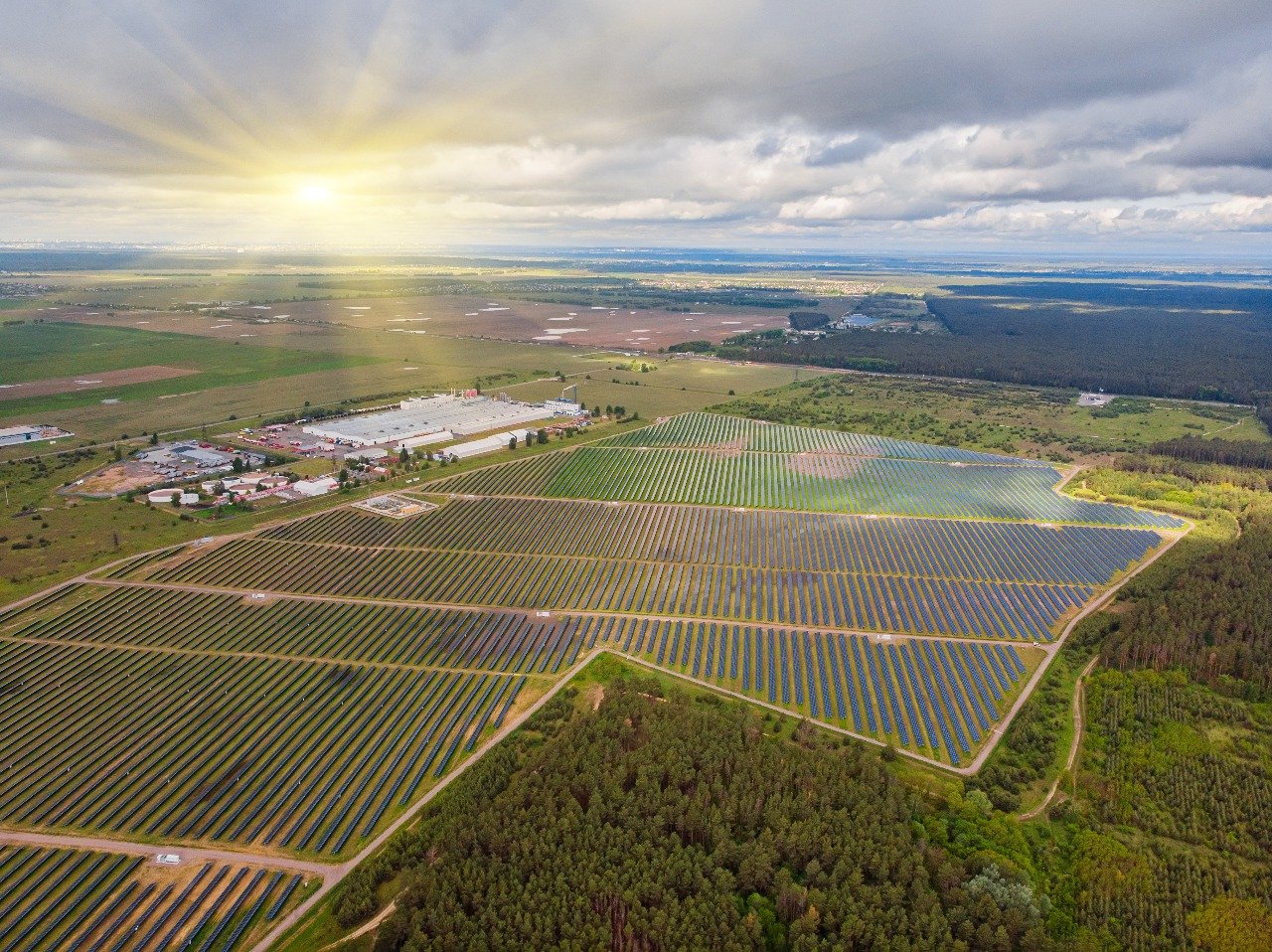In a world facing simultaneous challenges of food security and climate change, the agrivoltaic solar systems offers a powerful solution. By combining agriculture with photovoltaic technology, this innovative system allows farmers to grow crops while generating solar power on the same land. As India and many other countries aim to maximize land use efficiency, the agrivoltaic solar systems stands out as a game-changing approach to sustainable development.
Table of Contents
In this comprehensive blog, we will explore the agrivoltaic solar systems in detail—its components, working, benefits, challenges, use cases, and why it holds the key to the future of renewable energy and agriculture. Whether you’re a farmer, solar EPC provider, policymaker, or sustainability enthusiast, this guide will give you everything you need to know.
What is an Agrivoltaic Solar Systems?
An Agrivoltaic Solar Systems (APV) is a innovative solution that combines agriculture and solar energy generation on the same land. Solar panels are installed above crops or grazing areas, allowing farming activities to coexist efficiently and sustainably. This dual-use system allows for efficient and sustainable use of solar energy.
Key Features
- Dual Land Use: Enables simultaneous food cultivation and power generation .
- Panel Configurations: Includes elevated mounts, interleaved rows, greenhouses, and pollinator-friendly arrays .
- Microclimate Benefits: The shade drops soil temperature and water evaporation, improving crop resilience and sometimes even boosting solar panel efficiency due to cooler operating conditions
How Does it Work?
1. Solar Panel Placement & Configuration
- Elevated Structures: Panels are installed 2–4 meters above the ground, allowing sunlight to reach crops and giving space for farm equipment or livestock movement.
- Inter-Row Layouts: Panels are spaced to let crops grow between rows with balanced exposure to sunlight and shade.
- Adjustable/Tracking Panels: Some systems use rotating or tilting solar trackers to control shade patterns based on crop growth cycles and sunlight needs.
2. Creating a Beneficial Microclimate
- Shade Regulation: Panels reduce direct sun exposure during peak hours, lowering heat stress on plants.
- Temperature Control: Shaded areas are cooler, and moisture from soil and plants helps lower the temperature around and under the panels.
- Humidity Stabilization: Shaded zones retain moisture better, increasing air humidity, which supports crop growth and reduces irrigation needs.
3. Improved Crop Response & Water Use
- Boost in Yields: Shade-loving crops like tomatoes, basil, lettuce, and peppers grow better under panels, with studies showing biomass increases up to 69%.
- Water Efficiency: Partial shading helps reduce water loss from evaporation. In dry areas, water usage can drop by 9–50%, making it ideal for arid regions.
- Caution for Sun-Loving Crops: Crops like maize or wheat may experience reduced yields if not managed properly, so crop selection and light management are key.
4. Increased Solar Panel Efficiency
- Evaporative Cooling: Moisture from crops and soil cools the panels, helping them operate more efficiently.
- Thermal Buffering: Lower panel temperatures result in 1–3% better energy performance than panels in traditional solar farms.
5. System Design Balance
Agrivoltaics aim to find a sweet spot between:
- Light requirements for crops vs. solar power generation.
- Height, tilt, and spacing of panels to suit both farming and energy needs.
- Accessibility for tractors, irrigation lines, and livestock movement.
- Dynamic setups, like movable or seasonal panels, adapt to crop cycles and weather conditions for optimal dual performance.
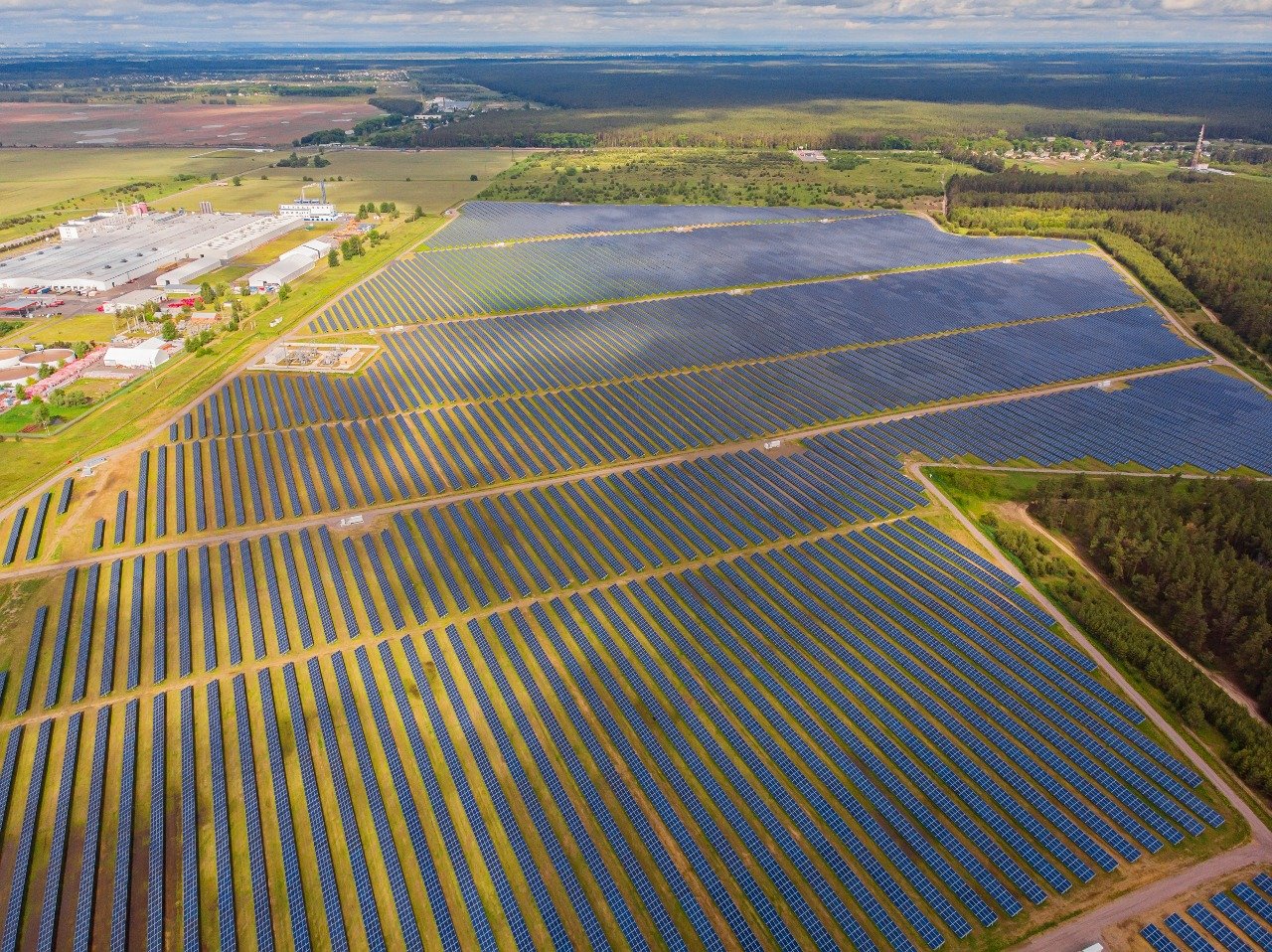
Evolution of the Agrivoltaic Solar Systems Concept
1. 1981 – The Origin: A Vision for Dual Land Use
The concept of agrivoltaics was first proposed in 1981 by Adolf Goetzberger and Armin Zastrow of the Fraunhofer Institute for Solar Energy Systems (ISE) in Germany.
They introduced the groundbreaking idea of “simultaneous land use for solar energy and agriculture,” laying the foundation for future innovations.
Key Idea: Install PV modules above agricultural fields, allowing crops to grow underneath.
2. 2004 – Japan’s First Practical Application
In 2004, Akira Nagashima, a Japanese engineer, introduced the concept of “solar sharing.”
He developed lightweight, adjustable solar panel structures that could be tilted or repositioned to optimize sunlight for crops while generating electricity.
Key Innovation: Movable panel systems allowed seasonal adjustments for maximizing crop yields and solar output.
3. 2007–2011 – Early Prototypes in Europe
During this period, pilot projects began appearing across Austria, France, and Germany:
- Austria: Rope-rack panel tracking systems were tested to balance shade and sunlight.
- France & Germany: Early PV greenhouse projects and elevated panel arrays were experimented with.
- In 2011, the term “agrivoltaics” was officially used in academic literature, solidifying its position as a recognized field of research.
Key Development: Demonstrated viability of different agrivoltaic structures, paving the way for scalable projects.
4. 2012–2017 – Research Expansion & Field Trials
This era saw significant investments in agrivoltaic R&D:
- Germany’s Fraunhofer ISE launched the APV-Resola project, studying solar-agriculture synergy.
- France’s Sun’Agri project began using dynamic panels with AI-based shading algorithms.
- Italy, Spain, and the Netherlands also began testing crop performance under various solar configurations.
Key Focus: Optimizing panel height, angle, crop selection, and water usage under different climates.
5. 2018–2021 – Global Adoption & Scaling Up
With rising demand for renewable energy and climate-smart agriculture, agrivoltaics began scaling globally:
- China deployed agrivoltaic farms in desert regions.
- India initiated pilot projects under the KUSUM Scheme, encouraging farmers to generate solar power.
- USA developed educational demo farms like Jack’s Solar Garden in Colorado.
Key Trend: Focus on water savings, higher crop yields, biodiversity benefits, and increased farmer income.
6. 2022–Present – Policy Recognition & Smart Technology
The 2020s have brought agrivoltaics to the mainstream:
- France legalized agrivoltaics under its renewable energy law in 2023, defining land-sharing standards.
- Innovations like solar tracking systems, AI-based shading, and bifacial panels are now common.
- Agrivoltaics is gaining traction across Africa, the Middle East, and South Asia, including large-scale installations in India’s Rajasthan and Gujarat.
Key Advancement: Governments and EPC companies now view agrivoltaics as a mainstream, scalable solution for climate resilience and dual-income generation.
Components of an Agrivoltaic Solar Systems
A robust agrivoltaic solar systems typically includes the following components:
a) Solar PV Modules
Solar panels for agrivoltaic solar systems capture sunlight and convert it into electricity. They come in various types, including standard monocrystalline or polycrystalline panels, biifacial panels, and semi-transparent or elevated PV modules. Mounting heights are typically 2 to 4 meters above ground, allowing sunlight penetration and space for farming equipment or livestock. Balancing energy output and plant growth potential is crucial.
b) Elevated Mounting Structures
Solar panels are used to secure them above farmland, with options including fixed-tilt structures, single-axis trackers, and dual-axis trackers. These structures are designed with corrosion-resistant materials, stability for varying climates and soil types, and high clearance for agricultural machinery. The options include fixed, single-axis, or dual-axis tracking systems for optimal sunlight and shade management.
c) Inverters and Electrical Infrastructure
Agrivoltaics is a renewable energy source that converts DC output into AC, measuring generation levels. It involves inverters, meters, charge controllers, battery storage, and extensive cabling. These systems connect panels and balance electrical loads, making agrivoltaics viable for rural electrification. Well-managed power systems make agrivoltaics a viable option for off-grid or hybrid systems.
d) Monitoring & Control Systems
The technology used for real-time data collection and automation includes IoT-based soil sensors, sun trackers, humidity meters, temperature gauges, AI software for crop health tracking, and centralized control panels for energy and farming functions. This smart agrivoltaics system enhances yields and energy use.
e) Energy Storage & Distribution
Battery systems store excess solar energy for nighttime or off-grid use, enabling smart grid integration. Components include lithium-ion or lead-acid battery banks, hybrid inverters, and energy management software. This enhances farmer independence from the grid and provides reliability.
Key Benefits of Agrivoltaic Solar Systems
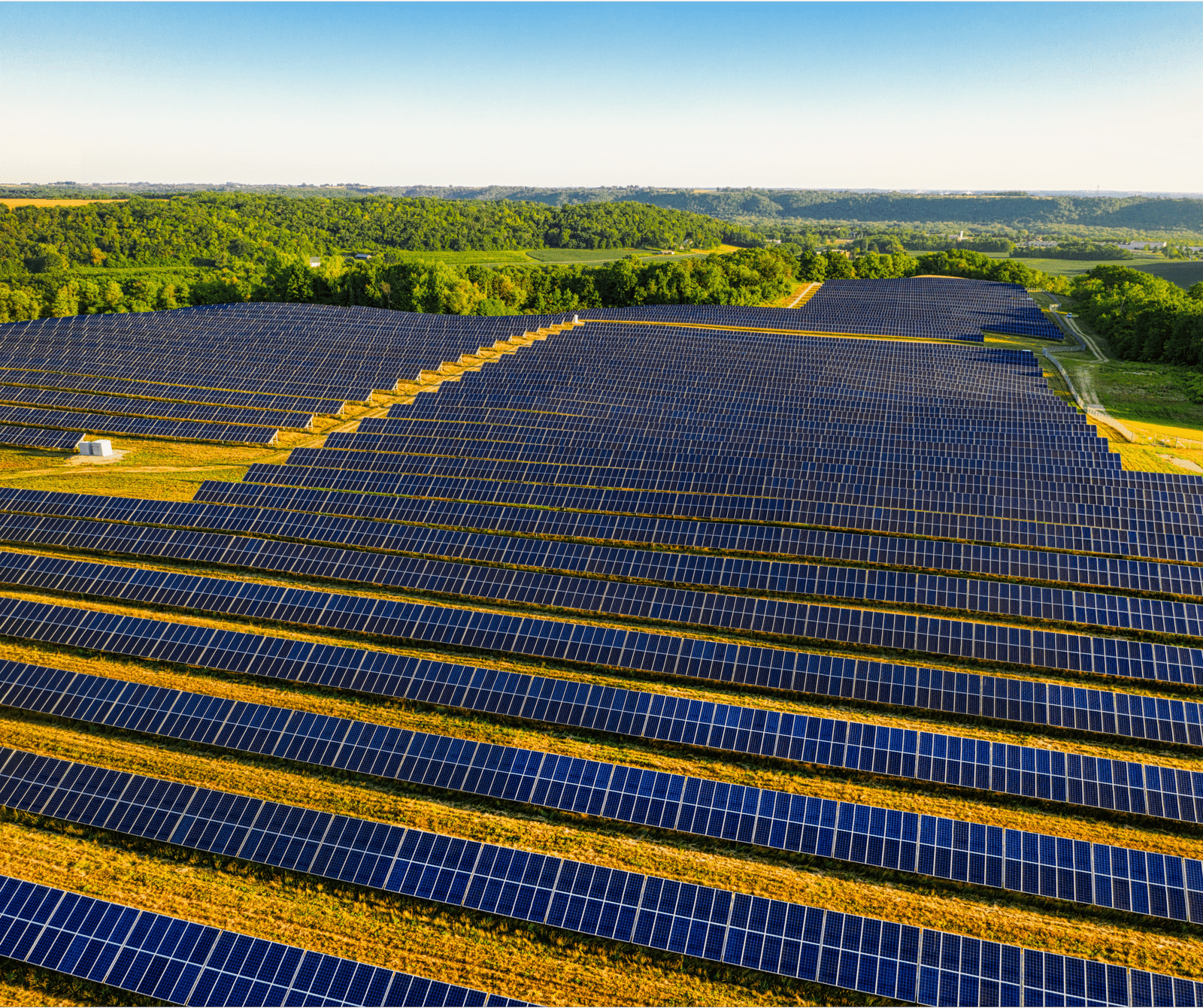
1. Dual Land Use – Food & Energy from the Same Acre
- Agrivoltaic systems enable simultaneous cultivation of crops and solar power generation on the same agricultural land, maximizing land productivity up to 160-180%. This is particularly beneficial in land-scarce or agriculturally intensive regions, especially in Europe, the U.S., and India where land-use competition is high. This dual-use solar land is popular in countries with limited farmland and growing energy demands.
2. Increased Solar Panel Efficiency
- Crops grown beneath solar panels cool the environment, improving the performance of photovoltaic (PV) panels. This results in a 5-10% increase in PV efficiency in hot climates. The natural cooling effect from evapotranspiration benefits both panels and crops, with some trials reaching up to 20%.
3. Water Conservation & Improved Crop Health
- Solar panels provide partial shading, reducing soil moisture and water evaporation, reducing irrigation needs by 30-50%. This reduces water wastage in drought-prone or arid regions, creating a more stable microclimate, and increasing yields for heat-sensitive crops by 20-60%. SEO keywords focus on agrivoltaic water savings.
4. Economic Resilience & Diversified Income
- Farmers can earn from crop sales and solar power generation, leasing land to EPC firms or solar developers. This agrivoltaic revenue model offers stable long-term lease or PPA income, lower electricity bills, and financial security against poor harvests or market volatility. The power generated can be used for self-consumption.
5. Improved Crop Yields for Shade-Tolerant Plants
- Not all crops require full sunlight, and some thrive in partial shade. Benefits include higher yields for crops like tomatoes, spinach, lettuce, peppers, and strawberries, as well as protection against heat, hail, and wind damage. Shaded conditions lead to healthier, more resilient plants, making them ideal for agrivoltaics and crop productivity with solar.
6. Livestock Grazing & Vegetation Management
- Solar panels can be used for grazing sheep, goats, or poultry, reducing maintenance costs and promoting biodiversity. This agrivoltaic technology reduces mowing and maintenance costs, while also promoting integrated farming and maintaining biodiversity. The space under and between solar panels can be utilized for grazing purposes.
7. Climate Resilience & Reduced Emissions
- Agrivoltaics, a combination of renewable energy and sustainable agriculture, promotes climate adaptation by reducing carbon footprint, preventing land degradation, and enhancing biodiversity. They also provide crop protection from extreme weather, reduce the need for fossil-fueled irrigation pumps, combat land degradation, increase carbon savings, and align with ESG principles.
8. Workplace & Community Benefits
- Agrivoltaics community support and rural solar acceptance are key factors in promoting sustainable farming. By incorporating shaded conditions, agrivoltaic models provide better working conditions for farm laborers, boost public and local support, and maintain the aesthetic value of rural landscapes. This approach enhances public perception of solar energy as a sustainable farming tool.
Ideal Crops for Agrivoltaic Solar Systems
1. Leafy Greens & Brassicas
- Top options for growing lettuce, spinach, kale, arugula, and Swiss chard are those that require less direct sunlight, thrive in cooler microclimates, and maintain or improve yields under partial shade. Ideal conditions include shaded rows between solar arrays in warm or arid climates.
2. Root Vegetables
- Carrots, beets, radishes, turnips, and potatoes are ideal for agrivoltaic setups due to their ability to grow underground, benefit from soil moisture retention, and consistently deliver stable harvests under reduced light.
3. Tomatoes, Peppers & Herbs
- Cherry tomatoes, peppers (bell and chili), basil, cilantro, mint, and parsley thrive under dappled sunlight, increasing productivity and reducing water needs. They also benefit from heat stress protection, with studies showing tripled yields and doubled tomato harvests under partial shade.
4. Small Fruits & Berries
- Strawberries, raspberries, blackberries, and blueberries are ideal for cooler climates with high solar potential due to their ability to perform well in partial sunlight, yield higher, and improve fruit quality.
5. Forage & Forage Grasses
- Clover, alfalfa, ryegrass, and fescue are effective for shaded areas, providing livestock feed and vegetation control, and integrating well with agrivoltaic-livestock systems for grazing and cooling.
6. Mushrooms
- Shiitake, oyster, and lion’s mane are high-value crops that thrive in cool, humid, shaded environments, such as beneath PV panels, and require low land use, making them ideal for crop cultivation.
7. Cereals & Pulses (Selective Use)
- Selective crops like barley, soybeans, oats, and peas may work well in regions with longer daylight hours or under dynamic tracking systems, while maize, rice, and sunflowers require full sunlight and may suffer significant yield loss under static PV systems, depending on the depth/timing of shade.
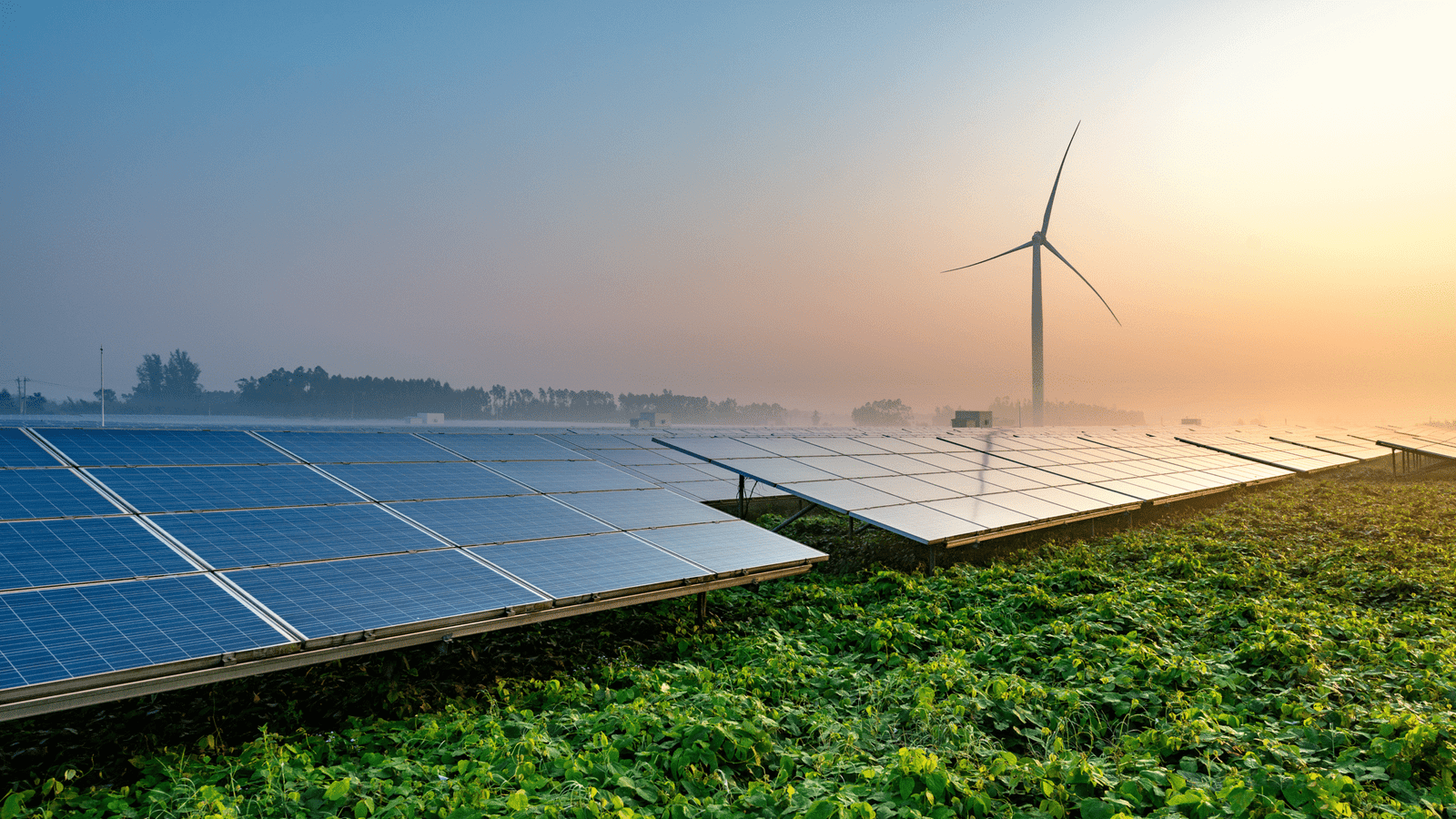
Agrivoltaic Solar Systems Designs and Structures
1. Elevated Solar Structures (Stilted Frameworks)
- Elevated agrivoltaic structures, typically 2-8 meters above ground, are designed for dual-use solar farming. These structures provide ample space for farming equipment and livestock movement, making them ideal for cattle grazing, vegetable farming, and orchards. They are ideal for large-scale mechanized farms and grazing systems.
2. Spaced-Row Arrays (Fixed Tilt Panels with Gaps)
- Fixed tilt solar panels are designed to create alternating sunlit and shaded bands across fields, making them easy to install and suitable for crop research and pollinator habitats. They minimize light blockage while maximizing land use, making them ideal for seasonal crops and field crops like wheat and pulses.
3. Vertical Bifacial Panels
- Vertical solar panels, often integrated as fences, offer minimal soil coverage, easy land use, and reduce soiling and shading conflicts. They are compatible with grazing and windbreaks, making them ideal for dairy farms, livestock areas, and vineyards.
4. Rotating or Tracking Canopy Systems
- The French TSE rotating solar canopy, a large canopy roof made of tracker-mounted bifacial panels, offers dynamic shading, protection against extreme conditions, and accommodates heavy machinery. This design is ideal for high-value crops sensitive to intense sunlight, and is mounted on a solar tracking agrivoltaic solar system.
5. Greenhouse Agrivoltaics (Agro-Solar Greenhouses)
- Semi-transparent PV panels integrated into greenhouse structures offer controlled microclimate farming with direct solar-generated power for lighting, heating, and irrigation. Ideal for high-value crops like tomatoes, herbs, floriculture, and high-margin produce, these systems create a controlled environment while generating solar power.
6. Solar Tunnel Structures
- Solar tunnels for agriculture, designed with tunnel-shaped frames and PV panels, are ideal for specialty crops like mushrooms, mushrooms, and medicinal plants. They provide shade and humidity, are modular and mobile for crop rotation, and are often movable.
Agrivoltaic Solar Systems vs Ground-Mounted Solar Systems
| Feature | Agrivoltaic Solar Systems | Ground-Mounted Solar |
|---|---|---|
| Land Use | Dual-use; up to 186% efficiency | Single-use; 1–2 ha/MW |
| Capex per kW | 30–100% higher (€750–1,234/kW) | Typical: ~€572/kW |
| Opex & Maintenance | Complex (crops + power) | Simpler & cheaper |
| Revenue Streams | Dual income—crops + energy | Energy-only |
| Panel Efficiency | Slightly higher via cooling effects | Standard efficiency |
| Environmental Benefits | Biodiversity, water savings, heat control | Less eco-benefit |
| Public Acceptance | High (over 80%) | Moderate |
| Permitting | More complex | Streamlined |
| Climate Resilience | Higher – dual protection | Moderate |
Challenges in Agrivoltaic Solar Systems Adoption
1. Land Use Conflicts & Regulatory Barriers
- Indian land laws under Land Revenue and Reforms Acts often restrict solar use on farmland without converting it to non-agricultural status.
- There are no clear agrivoltaic-specific guidelines, zoning rules, or tariffs, creating confusion for farmers and developers.
- Frequent land acquisition disputes have led to public protests, increasing mistrust in solar initiatives.
Solution: Define agrivoltaics as a “dual-use” category in land laws. Create clear policy guidelines and fast-track approvals for agrivoltaic projects.
2. High Upfront Costs & Limited Financing Options
- Agrivoltaic solar systems cost ₹5–25 lakh per acre depending on scale and structure.
- Despite PM-KUSUM subsidies (30–50%), affordable loans and crop-linked insurance remain inaccessible for smallholders.
- Unclear ROI makes investors hesitant.
Solution: Introduce low-interest, agrivoltaic-specific loans, crop-backed finance schemes, and better access to PM-KUSUM for dual-use projects.
3. Technical Complexity & Design Challenges
- Requires customized system design (panel height, tilt, spacing) based on crop compatibility and sunlight needs.
- Lack of standardized design norms leads to inconsistent system performance.
- Maintenance is complex—balancing solar and agriculture operations.
Solution: Standardize agrivoltaic design templates across agro-climatic zones in collaboration with agricultural research institutes and EPCs.
4. Low Awareness, Training & Institutional Support
- Most farmers lack technical knowledge about agrivoltaics and are hesitant to change their cropping systems.
- Very few demo projects or training centers exist across India.
Solution: Build pilot projects in each state. Partner with Krishi Vigyan Kendras (KVKs), agriculture universities, and local NGOs for farmer training.
5. Crop Suitability & Yield Uncertainty
- Limited studies on how staple crops like wheat, rice, and sugarcane perform under partial shade.
- Poor planning may lead to reduced yields or crop failure.
Solution: Conduct region-wise crop–shade trials and promote shade-tolerant crop varieties suited to each climate zone.
6. Grid Access & Lack of Tariff Mechanism
- Weak rural grid infrastructure hinders energy export.
- No dedicated feed-in tariff (FiT) or incentive structure exists for agrivoltaic energy generation.
Solution: Establish a dual-tariff mechanism and incentivize agrivoltaic energy through special feed-in rates and net metering schemes.
7. Equity & Land Ownership Fragmentation
- Fragmented land ownership makes it hard to build large-scale agrivoltaic solar systems.
- Smallholders often lack the resources and legal knowledge to participate.
Solution: Promote cooperative farming models, land pooling, and farmer-producer companies (FPCs) to aggregate land and share benefits.
8. Community Resistance & Social Equity Gaps
- Farmers fear land grabs and being excluded from project benefits due to past mismanagement of solar projects.
- Agrivoltaics risk excluding the rural poor if not designed inclusively.
Solution: Ensure transparency, local involvement, profit-sharing models, and social audits to build trust within farming communities.
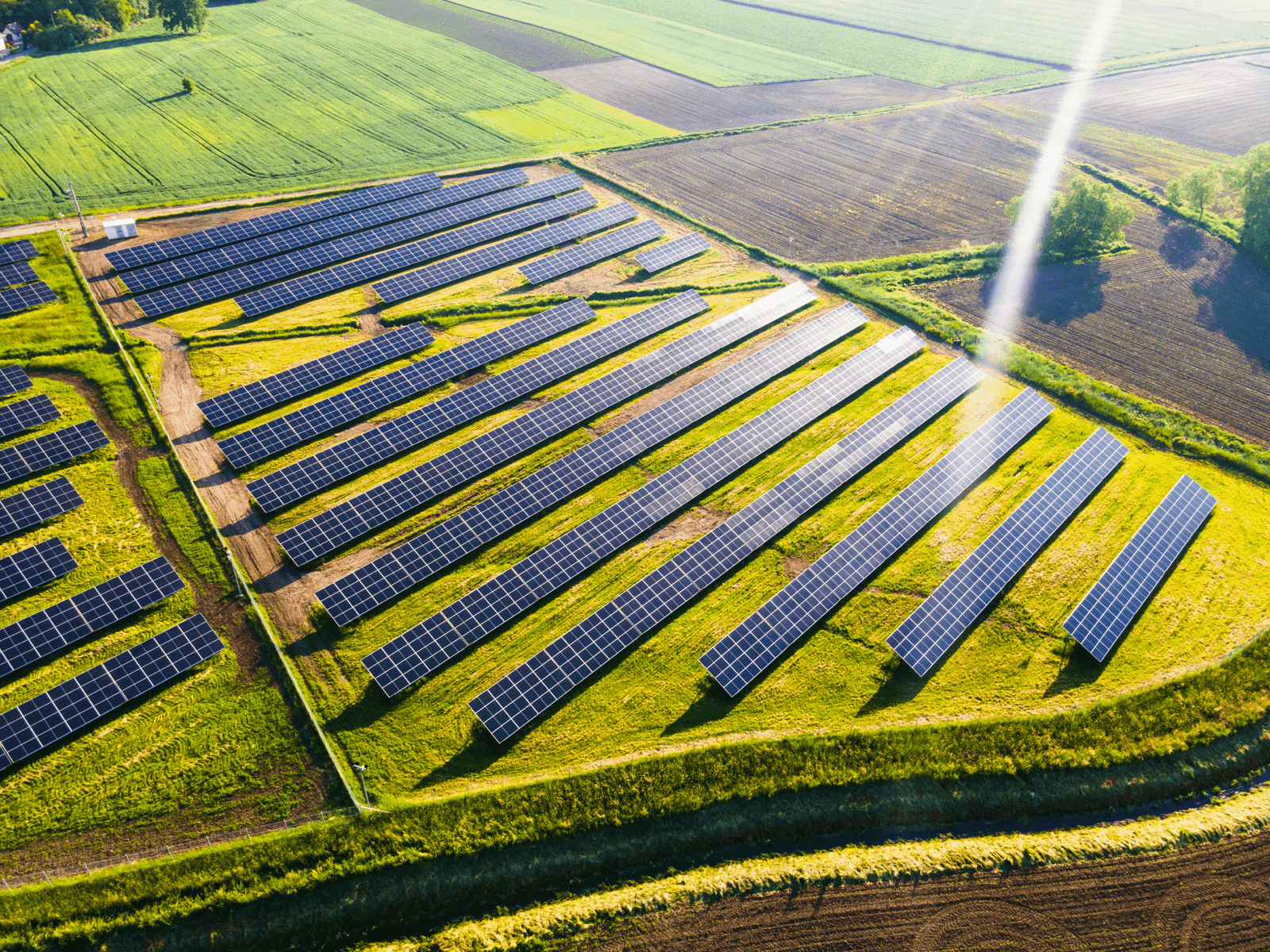
Policies Supporting Agrivoltaic Projects
1. PM-KUSUM Scheme (Pradhan Mantri Kisan Urja Suraksha evam Utthaan Mahabhiyan)
- The Ministry of New and Renewable Energy (MNRE) launched a program in 2019 to empower farmers to generate solar power on their land and sell surplus energy to DISCOMs. The program includes components A, B & C, which allow for grid-connected solar power plants on barren or agricultural land, and components B & C, which include off-grid solar pumps and grid-connected pumps. The program also qualifies under PM-KUSUM and recommends elevated structures for agricultural activity beneath. Capital subsidies, performance-based incentives, and grid buy-back through DISCOMs are provided.
2. Land Revenue Rules & State-Level Amendments
- Several Indian states, including Maharashtra, Gujarat, Rajasthan, and Uttar Pradesh, have modified their land revenue rules to permit solar installations on farmland without reclassifying land, despite the previous requirement for agricultural land to be reclassified as “non-agricultural,” thereby promoting agrivoltaic adoption.
3. National Solar Energy Policy and State Solar Policies
- Rajasthan, Gujarat, and Maharashtra’s solar policies promote decentralized, farm-based solar systems, allowing for agrivoltaic implementations. The Rajasthan Solar Energy Policy 2019 encourages solar parks and decentralized solar generation on private lands, while the Gujarat Solar Policy 2021 recognizes rooftop, ground-mounted, and floating solar systems. The Maharashtra Renewable Energy Policy promotes solar farming and dual-use land through farmer cooperatives, providing benefits to agrivoltaic projects. These policies provide a legal and economic ecosystem for agrivoltaic development.
4. Renewable Energy Incentives & Tariff Mechanisms
- MNRE and SERCs provide accelerated depreciation, capital subsidies, and net/gross metering benefits for farm-based PV installations. Feeder-level and pump solarization schemes receive full CFA funding and performance-based purchase contracts. Key incentives include accelerated depreciation, capital subsidies, and viability gap funding. Developers using a co-operative or FPO model can benefit from tax incentives and feed-in tariffs.
5. Support for Farmer Producer Organizations (FPOs)
- PM-KUSUM encourages FPOs and cooperatives to install grid-connected solar plants on pooled land, promoting shared income and economies of scale. Under India’s FPO Scheme, NABARD and SFAC support formation and training of Farmer Producer Organizations, funding shared infrastructure and solar-powered processing units.
6. Draft National Agro-Solar Policy (Proposed)
- The draft policy aims to officially recognize agrivoltaics, define standards, design tariff models, and support dual-use solar-agriculture projects. It will define technical standards for crop compatibility, structure design, and land productivity, establish specific tariff models, and offer long-term subsidies for such installations. This could be a turning point in India’s agrivoltaic journey.
ROI and Financial Models
Agrivoltaic solar systems in India offer high dual revenue, a strong return on investment, efficient land usage, and long-term sustainability for energy and agriculture. The LCOE and payback periods for agrivoltaic solar systems are compared to ground-mounted systems, with agrivoltaic solar systems showing a 12.7% higher solar output due to microclimate cooling. The project-scale financial model for agrivoltaic solar systems is financed with 60% debt and 40% equity, with a total capital of ₹4.5 crore.
The return on investment (ROI) is calculated by combining solar energy revenue, crop yield revenue, irrigation costs savings due to shade, retained land value, government subsidies, and carbon credits. The financial models in practice include the CAPEX Model, RESCO Model, and Public-Private Partnership (PPP). Agrivoltaic solar systems also offer government incentives supporting ROI, such as PM-KUSUM subsidies, accelerated depreciation, net/gross metering, priority sector lending, and carbon credit monetization. Overall, agrivoltaic solar systems are a win-win investment for farmers, developers, and investors, providing a sustainable and environmentally friendly solution for energy and agriculture.
Agrivoltaics and Sustainable Development Goals (SDGs)
The agrivoltaic solar systems directly supports multiple UN SDGs:
- SDG 1: No Poverty — Enables dual-income models (energy + crops), uplifting rural livelihoods and economic resilience
- SDG 2: Zero Hunger — Enhances crop resilience via shade and reduced heat stress, improving yield and quality.
- SDG 7: Affordable and Clean Energy — Generates on-site renewable energy using farmland, reducing fossil fuel reliance and boosting energy access.
- SDG 6: Clean Water & Sanitation — Panels reduce soil evaporation—water savings of up to 50%—supporting sustainable irrigation in water-scarce regions
- SDG 13: Climate Action — Cuts greenhouse gas emissions, promotes clean energy, and mitigates climate risks to crops .
- SDG 8: Decent Work and Economic Growth — Creates jobs in solar installation, maintenance, agronomy, and value addition—particularly benefiting rural and marginalized communities .
Agrivoltaics Solar Systems in the Future of Solar EPC
Agrivoltaic Solar Systems are revolutionizing the Solar Engineering, Procurement, and Construction (EPC) industry by offering clean energy generation and sustainable farming. These systems double land productivity, support rural development and energy security, and align with ESG and SDG goals. EPC contractors must now integrate solar design with agricultural science, offering turnkey solutions that can differentiate themselves and gain a competitive edge in government tenders and private sector projects.
Three future-ready business models for EPCs include the Co-Development Model, Solar Lease Model, and RESCO + Agro-Energy Model. Despite initial capex being 15-30% higher than traditional solar due to complex structure and design, ROI improves through dual income, government subsidies, carbon credits, and ESG-linked investments.
Global trends include Germany, Japan, and France, while India’s Ministry of New and Renewable Energy is exploring pilot projects under its AgriPV policy. States like Rajasthan, Maharashtra, and Gujarat are evaluating agrivoltaic integration due to their vast semi-arid farmlands and solar potential.
The global agrivoltaics market is projected to grow at a CAGR of 8-10%, reaching USD 7.6-9.3 billion by 2031. Technological drivers for EPC innovation include dynamic tracking systems, facial and thin-film PV, AI, IoT, and sensor integration. EPC business models and strategy evolution include full EPC + O&M, hybrid financing models, and pilot demonstration sites.
Main challenges for EPC adoption include cost premiums, technical complexity, and perception risks. Future outlook and opportunities include policy shifts, scale-up potential, and strategic diversification.
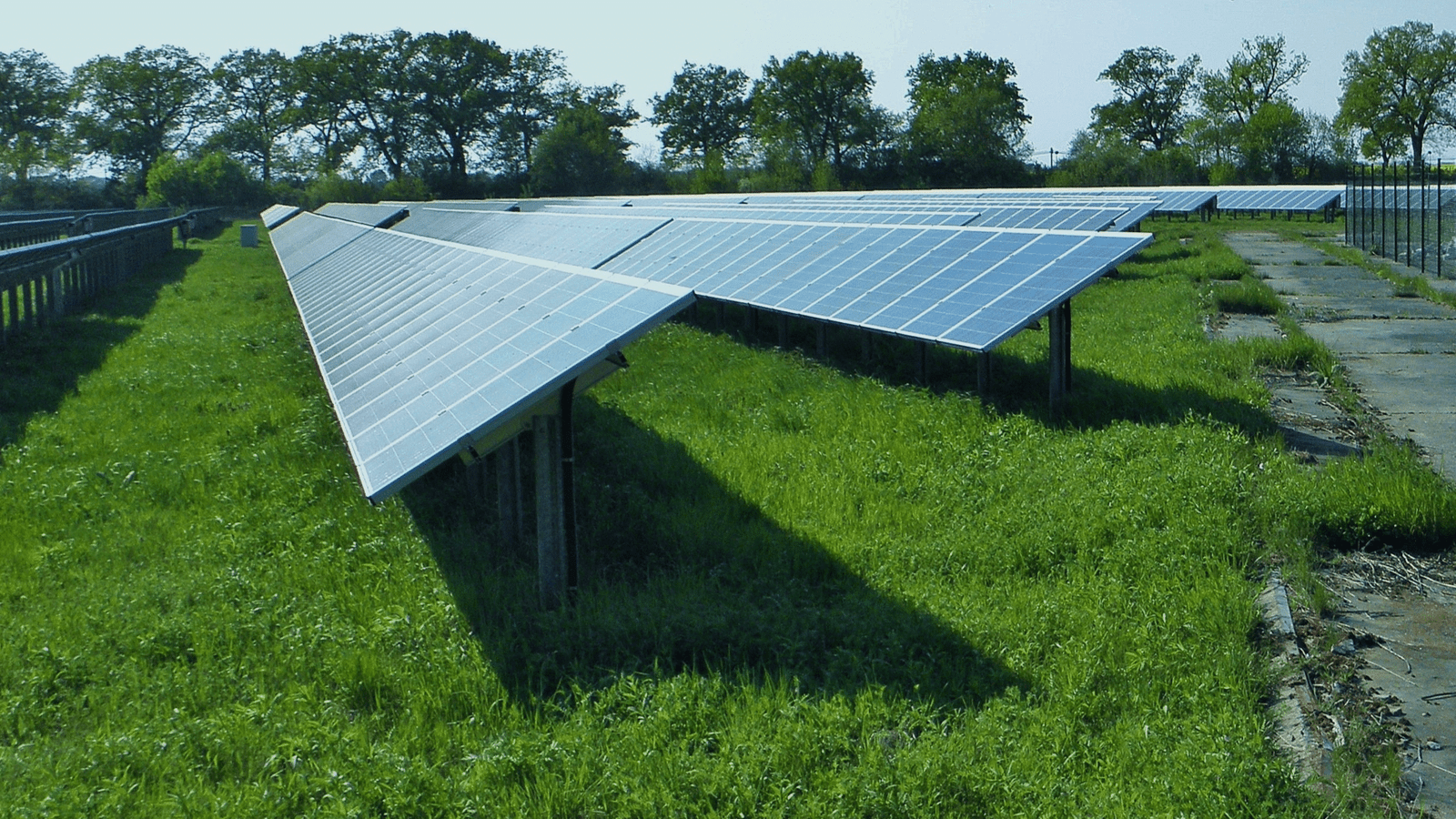
Smart Technologies for Agrivoltaic Solar Systems
- IoT & Sensor Ecosystems: Real-time data collection on crop microclimates and panel performance via soil moisture, temperature, humidity, light sensors.
- AI & Machine Learning Analytics: Predictive modeling for irrigation needs, pest outbreaks, panel faults, and yield outcomes.
- Automated Agri-Equipment: Robots and drones perform precision tasks like crop monitoring, fertilization, pest control, or panel cleaning.
- Precision Irrigation & Solar Fertigation: IoT-enabled drip irrigation systems reduce water waste via soil moisture feedback loops.
- Tracking & Dynamic Panel Optimization: Single-axis trackers adapt panel tilt to enhance energy yield and optimize crop lighting.
- Energy Storage & Smart Grid Integration: Battery storage systems ensure power availability for irrigation, monitoring, and crop processing needs.
- Digital Platforms & Visualization: Smart dashboards deliver real-time monitoring of system performance, environmental conditions, and alerts.
- Benefits for EPCs & Farmers: Optimized water savings, better crop management, improved energy generation, maintenance efficiency, and scalability.
- Conclusion: Smart agrivoltaics is transforming how energy and agriculture co-exist, making solar EPC projects more efficient, sustainable, and profitable.
Agrivoltaic Solar Systems and Carbon Credits
Opportunities and Challenges
- Agrivoltaic solar systems, combining solar energy generation with agricultural production, present opportunities in carbon finance.
- Carbon reduction through energy displacement: Agrivoltaics offset fossil fuel-derived electricity, reducing CO₂ emissions.
- Carbon sequestration via soil & biomass: Shaded micro-climates under panels can improve soil health and enhance carbon storage in biomass and soils.
- India’s emerging carbon-farming market: Agrivoltaic practices align with internationally recognized carbon-reducing methods, making them eligible for carbon credits.
- Agrivoltaic-driven carbon credits: Baseline emissions covered, soil improvement tracking, verification & certification, and market sale.
- Challenges and enablers: Data & verification, regulatory recognition, access for farmers, future outlook & impact, and policy alignment.
- Solar energy generation reduces the need for conventional, grid-based electricity, qualifying for carbon offset certificates.
- Carbon sequestration improves soil organic carbon, which can be measured and certified as sequestered carbon under recognized carbon credit standards.
Steps to Develop an Agrivoltaic Solar Systems
Thinking of installing an agrivoltaic solar systems? Here’s a step-by-step guide:
- Site Selection and Feasibility Study: Solar resource assessment, soil and water analysis, and topography & accessibility are crucial for balancing energy yield and crop light availability in India. Key considerations include solar resource availability, soil type, fertility, topography, water availability, and grid infrastructure proximity.
- Crop-Solar Compatibility Assessment: In India’s agrivoltaic context, match crops with solar panel layouts, such as shade-tolerant vegetables, medicinal herbs, pulses, legumes, and flowering plants. Consult Krishi Vigyan Kendras or agri-research universities for guidance.
- System Design & Engineering: Utilize elevated structures per DIN standards, incorporate bifacial panels or trackers to improve crop yields, and use digital simulations to optimize sunlight distribution and panel-crop configuration. Balancing panel height, row spacing, and panel type is crucial.
- Financing and Subsidy Planning: Solar EPC costs range from ₹3.5-₹4.5 crore/MW, with civil and structural costs ranging from ₹40-₹50 lakhs/MW. Revenue streams include electricity sales, agricultural yield, carbon credits, and water savings. Financial structures include farmer/developer co-ownership, RESCO, PPP, and land pooling.
- Procurement & Implementation: The project involves procuring high-efficiency bifacial panels, elevated racking, inverters, SCADA, and irrigation systems, which will be implemented in phases, including civil foundations, structural and PV installation, electrical wiring, and irrigation setup.
- Operations & Maintenance (O&M): Utilize smart sensors for solar panel cleaning, inverter servicing, and monitoring kWh/kWp, and AI & ML tools for crop care, soil testing, and pest management, optimizing ROI.
Partnering with a seasoned EPC company ensures smooth execution and long-term reliability.
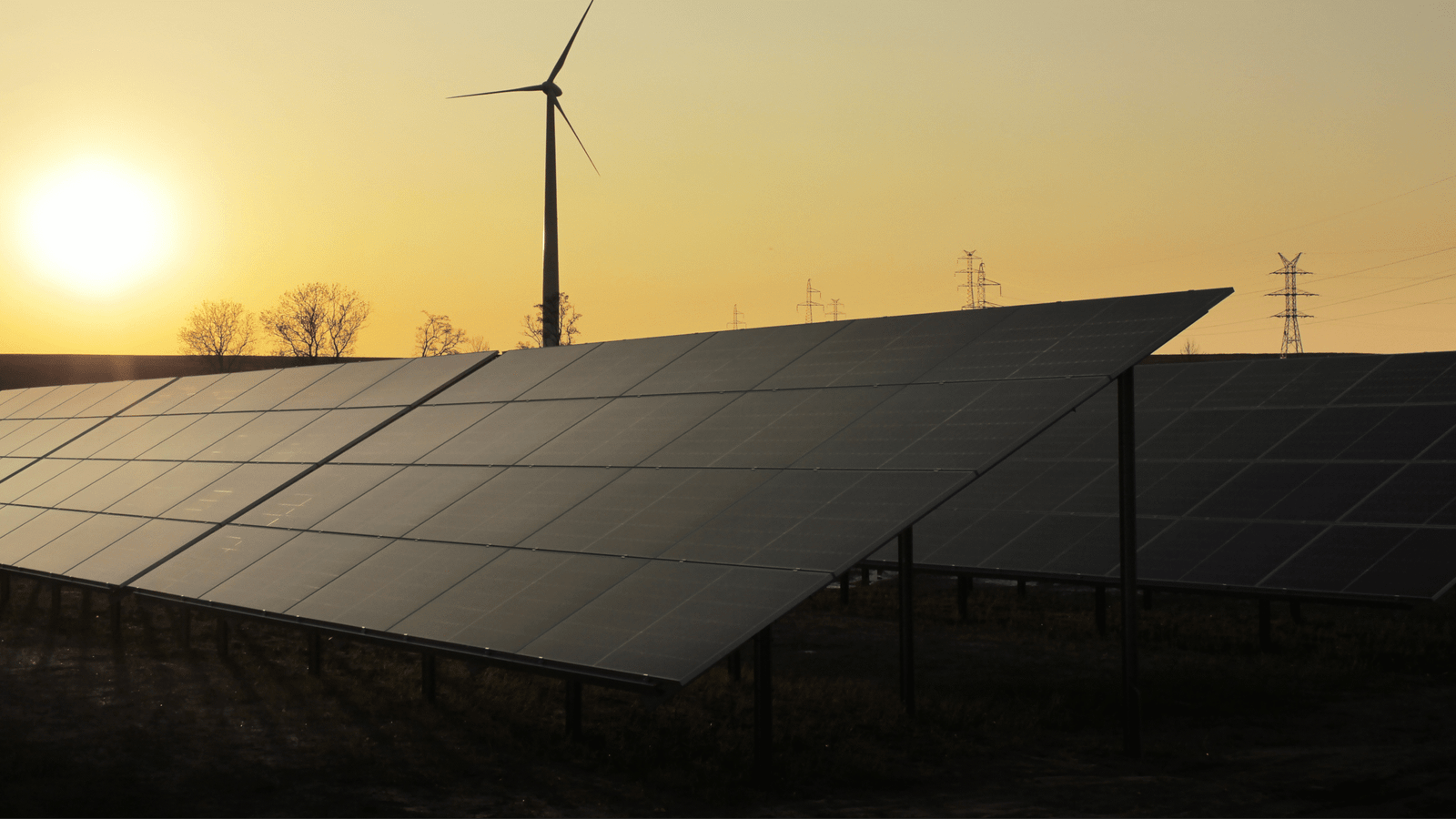
Conclusion: The Bright Future of Agrivoltaic Solar Systems
India is entering a new era of sustainability where energy security, food production, and climate resilience must go hand in hand. Agrivoltaic solar systems—the innovative fusion of agriculture and solar power generation—are no longer just a visionary concept; they are a real, scalable, and highly impactful solution for India’s land, energy, and water challenges.
With supportive frameworks like PM-KUSUM, growing awareness among farmers, and advances in solar EPC technologies, India is perfectly positioned to lead the global agrivoltaics revolution. These systems are helping reduce land-use conflicts, increase farmer incomes, improve water conservation, and meet clean energy targets—all at the same time.
At Soleos Solar Energy, we believe agrivoltaics is not just a smart investment—it’s a sustainable legacy. As pioneers in solar EPC and agrivoltaic innovation, we are committed to helping businesses, governments, and communities unlock the true potential of dual land use.
Frequently Asked Questions (FAQs)
1. What is an Agrivoltaic Solar System?
An agrivoltaic solar systems combines solar power generation with agricultural activities on the same land. It allows crops to grow beneath or between elevated solar panels, maximizing land use and delivering both food and energy.
2. How does an agrivoltaic solar system work?
Solar panels are mounted at specific heights and angles to allow sunlight and rainwater to reach the crops below. The system is designed to ensure that both solar energy production and farming operations coexist efficiently.
3. What crops can be grown under agrivoltaic solar panels?
Shade-tolerant crops like leafy greens (spinach, lettuce), root vegetables (carrots, radish), and herbs (mint, basil) perform well. Crop selection depends on local climate, panel design, and light diffusion.
4. What are the key benefits of agrivoltaics?
- Dual income from crops and electricity
- Water conservation through reduced evaporation
- Improved crop yield in hot climates
- Reduced land-use conflict
- Carbon footprint reduction
5. Is agrivoltaics suitable for India?
Yes, agrivoltaics is ideal for India due to land constraints, increasing energy needs, and climate challenges. It aligns with national goals under PM-KUSUM, Net Zero, and the Sustainable Development Goals (SDGs).
6. How much does it cost to install an agrivoltaic solar systems in India?
The cost varies based on size, panel type, structure design, and location. On average, it ranges from ₹50 lakhs to ₹1.5 crores per MW. However, government subsidies and carbon credits can significantly reduce costs.
7. What is the expected ROI for agrivoltaic projects in India?
Depending on crop type and power output, ROI can range from 12–18%, with a typical payback period of 5–7 years. Dual revenue from agriculture and power sales boosts profitability.
8. Are there any government schemes that support agrivoltaic solar projects?
Yes, schemes like PM-KUSUM (Component A & C) offer capital subsidies for setting up solar plants on agricultural land. State-specific programs also support agrivoltaics in Rajasthan, Gujarat, and Maharashtra.
9. Do agrivoltaic solar systems affect crop yields?
Studies show that partial shading from solar panels can actually improve yields of certain crops, especially in high-temperature regions. Panels can reduce heat stress, lower water usage, and preserve soil moisture.
10. Can I claim carbon credits for an agrivoltaic solar systems?
Yes. Since agrivoltaics produces renewable energy and supports carbon sequestration through agriculture, the system qualifies for carbon credits under international standards like Verra or Gold Standard.
